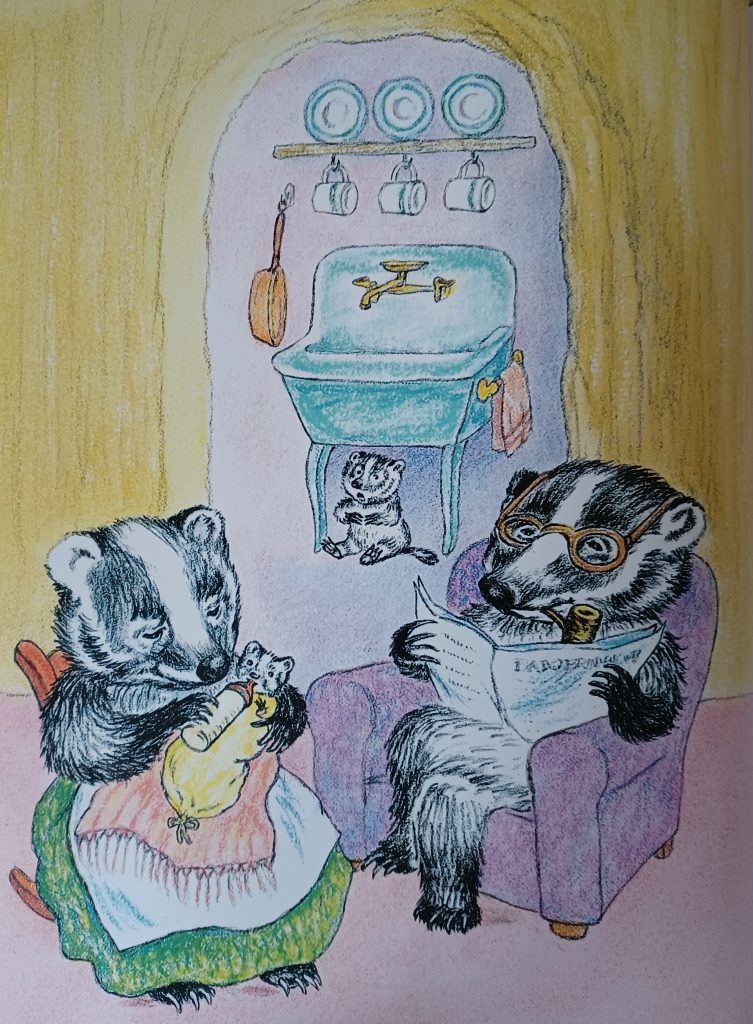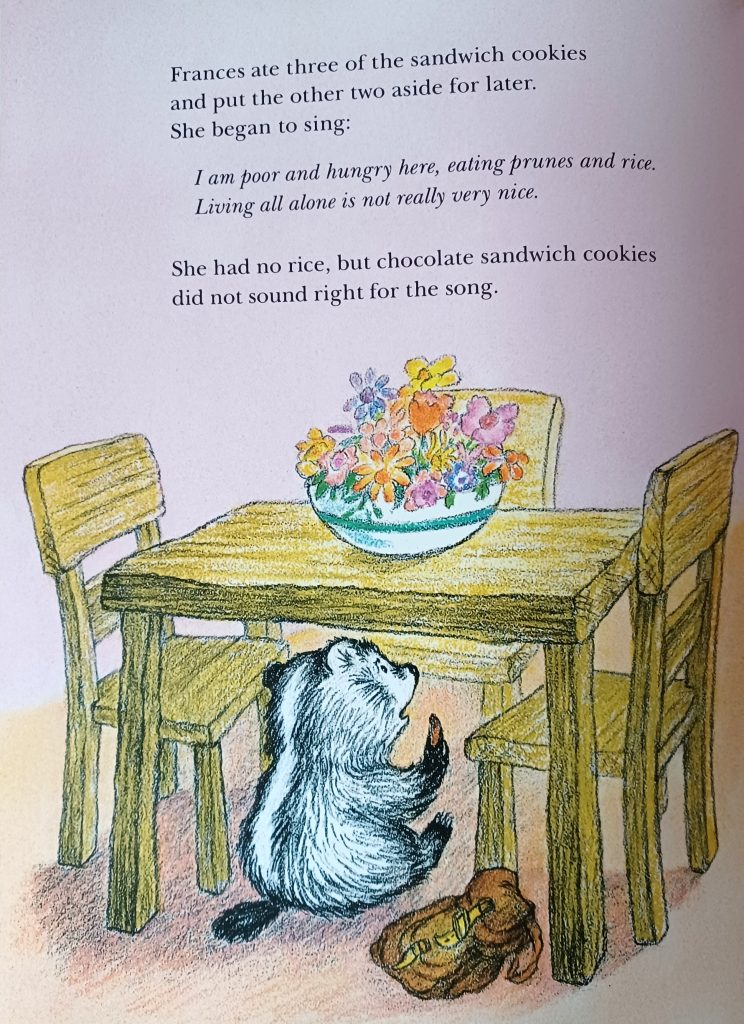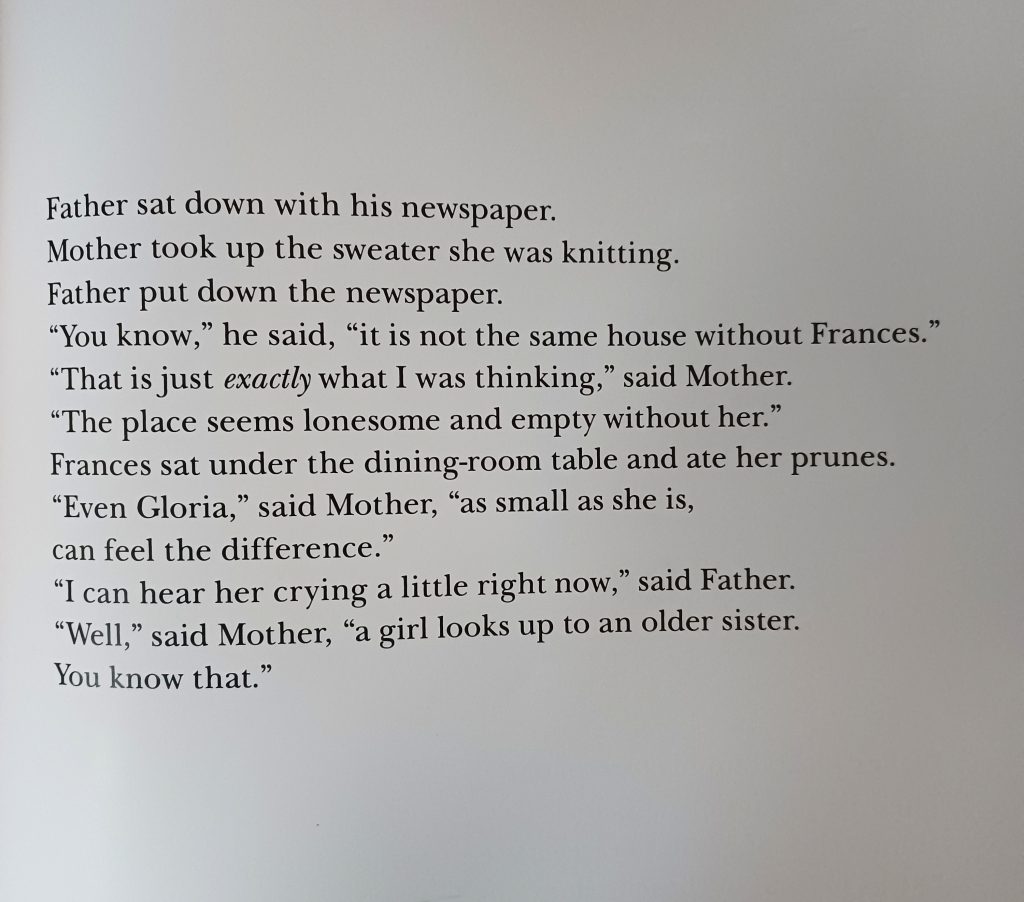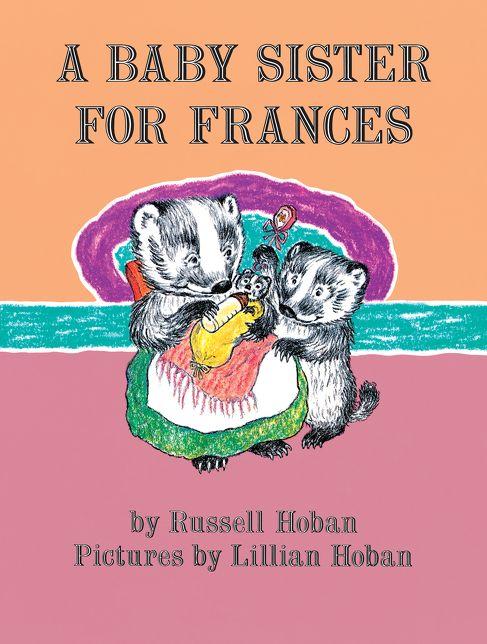A Baby Sister for Frances is the second Frances book written by Russell Hoban (1964), but the first illustrated by his wife, Lillian Hoban.
Frances is obviously struggling with the fact that she is no longer the center of her parents’ attention. Frances is well known for her little songs, but no one even comments on the one she composes while sitting cozily under the kitchen sink as Mother feeds the baby. Her parents don’t appreciate the musical instrument Frances makes with gravel in a coffee can.

At bedtime, Father piggybacks Frances to bed just as he has before. Father and Mother surround her with everything she asks to take to bed: tiny special blanket, tricycle and sled (beside the bed), both teddy bears, and her alligator doll. But when Mother doesn’t have time to iron the dress Frances wants to wear to school, and has run out of raisins for the oatmeal, Frances decides to run away.
After dinner, Frances packs her bag and runs away to sit under the dining room table. From there she can hear Father and Mother talking about how much they miss her and her little songs. They lament that the baby sister, Gloria, won’t have a big sister to look up to.

When Frances pretends to call Mother on the phone, she assures her and Father she will be home soon, so Mother decides she will bake a chocolate cake. Frances is sorry Gloria is too little to have cake, but all is once more right in the Badger household.
HarperCollins has recolored the illustrations in current versions, but I don’t believe it adds to the character of the original. You can see an inside view of how the book appeared in 1964 at Biblioguides.com.
This book was also abridged by HarperCollins in 2011 to make it fit their “I Can Read” series as a “Level 2 Reading With Help” book. Though I haven’t compared the two editions word-for-word, I have to wonder if there aren’t enough books with the proper vocabulary and reading difficulty to add to the 800+ book “I Can Read” series without adulterating a perfectly lovely story. If children are still at the stage of reading with help, surely they could be helped to read the original.

This book was written as a read-aloud, not a graded reader. As with Bedtime for Frances, some of the pages may have enough words to be daunting to young readers. This is much less likely to be discouraging if the child is sitting on your lap working through the difficult words with you. Or if she’s looking at the picture of Frances packing her running-away bag while you read the long words like, “chocolate sandwich cookies.”
When I am reading with a child who is attempting a book a bit above his or her current comfort reading level, I often offer to take turns. Maybe I read the right hand page and the child reads the left hand. With a page such as is shown above, I might volunteer to read all the words inside quotation marks, or “play” Mother and Father, with the child reading Frances’s part. Rather than a chore, let it be an act of love, imagination-building, and memory-making.

You can find more information about this book at biblioguides.com.
You may buy this book at Amazon.